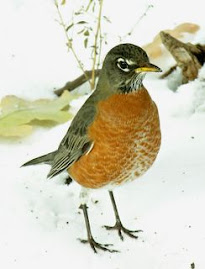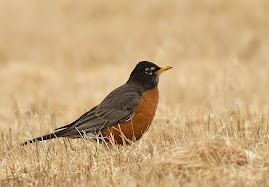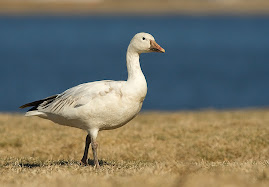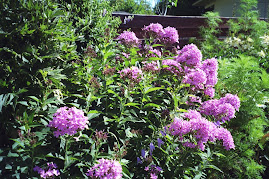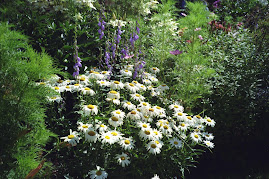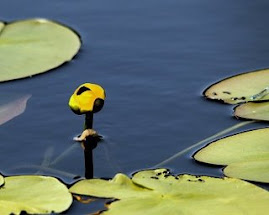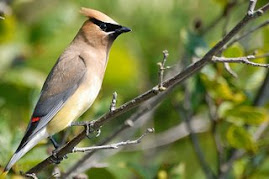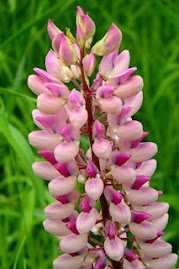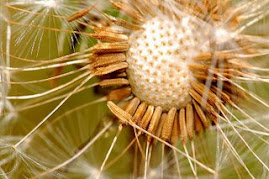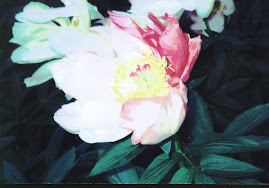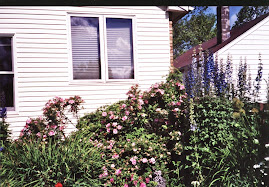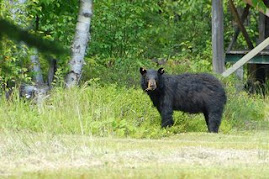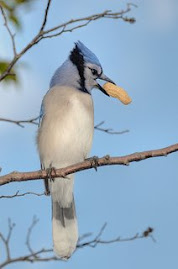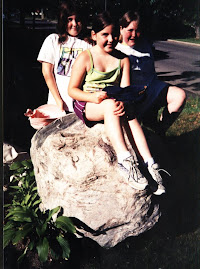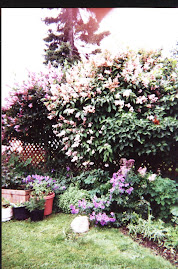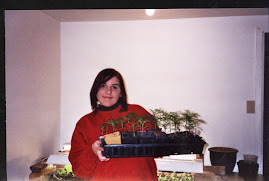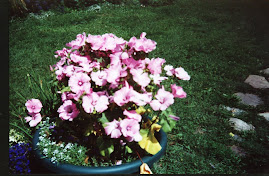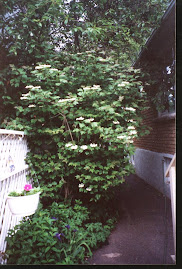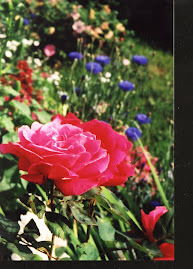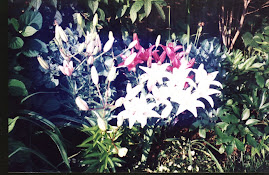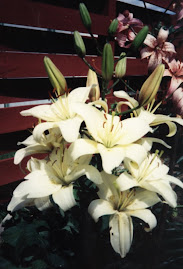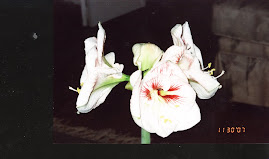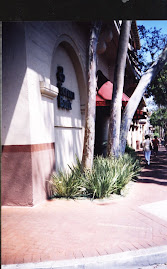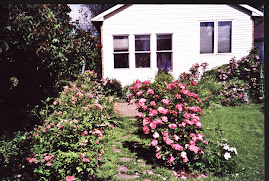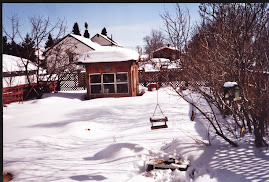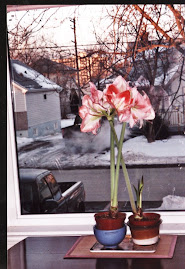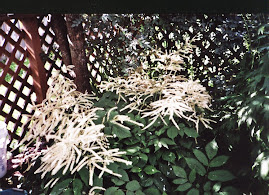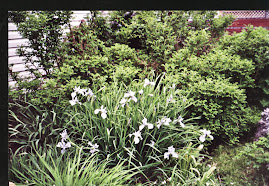In the early morning the garden is very quiet. I hear only the honking sound of a nuthatch in the Manitoba Maples next door. The usual morning sing-a-thon has ended for this year. The birds have finished nesting and no longer sing to signify the boundaries of their feeding territories. (If only we humans could resolve our boundary disputes with a morning song!).
It may surprise some readers to learn that the migrating birds are now preparing to leave. Once the fledglings are out of the nest and independent, the time arrives to feed up and head south. Most of our migrating birds head down the Mississippi, and many carry on to South America. We now know that migrants move from one "island" of habitat to the next. In a world of urban sprawl, they are seeking brushy areas with water. I hope my garden provides what they need. Last spring, a few warblers, including a red start, stopped by for a rest and a drink. Many migrating birds are not looking for feeder food. Warblers, for instance, eat insects. The redstart worked the perennial garden for a day, eating bugs, and then it flew off. There were not enough insects in my small patch to entice it to nest.
Some of the migrants hang about to molt. This does not take long. An American goldfinch turns from hot yellow to delicate greenish yellow in ten days. The new feathers push the old feathers out. Gold finches are seed eaters who demolish the weed seeds in a garden.
With the abundant mosquito and fly population this summer, it has been a good year for birds, signifying reproductive success. The warblers come north for the bugs and we gave them a good feed up this summer.
I like to do my weeding in the early mornings. During the warm afternoons, the earth resists the trowel but in the dew-soaked earth, the weeds are easier to dig. The trowel attacks the dandelions and other deep rooted plants, but I also have another efficient weeding tool. I do not know its proper name but it is a simple thing, a loop of metal on a handle. It scrapes a layer of soil pulling out the plantain, the chickweed and other shallow rooted interlopers.
By eight o'clock the female ruby-throated humming bird swings by to hit up the delphiniums for nectar. It is possible that she nested in one of my trees but the nest is so small, the size of a thimble, that I'll never find it. She''s a migrant and feeding up for the voyage.
The bees fumble the monks hood. This is a stately blue and white plant, a short blooomer, which takes over the back of the perennial bed as the delphinium stalks slowly turn to seed. White monks hood grows in my front garden along with the true blue variety. This is one of the toughest customers and always survives the winter but it needs to be wired to a tall stake or it buckles at the knees.
A friend suggested I pull out the campanula, the robust blue bell flower that is growing in all the back lanes and here and there among my garden beds. I will do so once they set up their seeds but for now the bees love them dearly and I love and need the bees. Strangely the bell flower only grows flowers on one side of its stalk. This plant also spreads by creeping root, so Iwon't be able to eliminate it entirely. I'll just keep it in check.. I note here the bees also love the mullein. Another reason to accept native plants.
The same friend also wondered why I let the arabis creep through the garden around the perennials. Perhaps I should cut it back? But arabis is a tricky plant. It can be killed over the winter, especially if we have no snow. So for now, I let it spread and fatten, knowing that a lot of it may not survive by spring.
I can't believe I am still pulling meadow rue, dame's rocket and forget-me-nots, trying to yank them out before they spread too many seeds. For an unknown reason, the policeman's helmets (or Himalayan impatiens) did not seed into by garden this year. I miss it.
Tip. On hot days, get out early for easier weeding.
Showing posts with label birds. Show all posts
Showing posts with label birds. Show all posts
Tuesday, 12 August 2008
Friday, 16 May 2008
BIRDS GALORE
Early this morning, about 6 a.m., I stepped out the back door to hear an astonishing sound —the song of a hermit thrush. The high sweet notes always make me shiver. The song is the most ethereal of all the boreal birds. Yet it is seldom heard in the city. However, a friend in Fort William reported a hermit thrush in her garden last week, a rare sight. My hermit thrush sang from high in the neighbour’s spruce tree. This bird is robin size, brown with a spotted breast and reddish tail. It is often seen on the ground looking for grubs and worms.
My garden is alive with birds these days. The sparrow tribe is well represented: chipping sparrow, white throated sparrow, junco, white crowned sparrow and, of course, the resident house sparrows. The junco and the white crowned are just passing through. The others have come to nest if they can. Sparrows are voracious seed eaters and they make regular patrols through the garden beds.
A ‘sweep, sweep’ whistle announces a group of pine siskins who love the Niger feeder. I am looking out for gold finches but so far they have not paid a visit. A friend in the County Park area has evening grosbeaks at her feeders. A robin sits in my crab apple tree and clucks and laughs. Few people know that a robin can laugh but it can. It also sings “cheer-up cheer-up” but it often throws in a few laughs to confuse the listener.
A red breasted nuthatch honks from the tall Manitoba maple next door. These trees are often considered too big for city gardens but birds love them. A woodpecker of some kind lives in there too. A friend complains about the persistent drumming of the local flicker. May is mating time for all the woodpeckers. The males often drum maniacally trying to attract a mate. Like all love frenzies, it will pass.
The usual city customers come by. Blue jays squawk even when they fly overhead, starlings mob the feeders, grackles patrol for slugs and grubs. Crows often hop down to see what they can find and gulls wheel over head.
I am hoping the ban on pesticides and herbicides will help the birds. And it is encouraging to see so many city people planting trees, bushes and lots of greenery, just the stuff birds love.
My garden is alive with birds these days. The sparrow tribe is well represented: chipping sparrow, white throated sparrow, junco, white crowned sparrow and, of course, the resident house sparrows. The junco and the white crowned are just passing through. The others have come to nest if they can. Sparrows are voracious seed eaters and they make regular patrols through the garden beds.
A ‘sweep, sweep’ whistle announces a group of pine siskins who love the Niger feeder. I am looking out for gold finches but so far they have not paid a visit. A friend in the County Park area has evening grosbeaks at her feeders. A robin sits in my crab apple tree and clucks and laughs. Few people know that a robin can laugh but it can. It also sings “cheer-up cheer-up” but it often throws in a few laughs to confuse the listener.
A red breasted nuthatch honks from the tall Manitoba maple next door. These trees are often considered too big for city gardens but birds love them. A woodpecker of some kind lives in there too. A friend complains about the persistent drumming of the local flicker. May is mating time for all the woodpeckers. The males often drum maniacally trying to attract a mate. Like all love frenzies, it will pass.
The usual city customers come by. Blue jays squawk even when they fly overhead, starlings mob the feeders, grackles patrol for slugs and grubs. Crows often hop down to see what they can find and gulls wheel over head.
I am hoping the ban on pesticides and herbicides will help the birds. And it is encouraging to see so many city people planting trees, bushes and lots of greenery, just the stuff birds love.
Subscribe to:
Posts (Atom)







